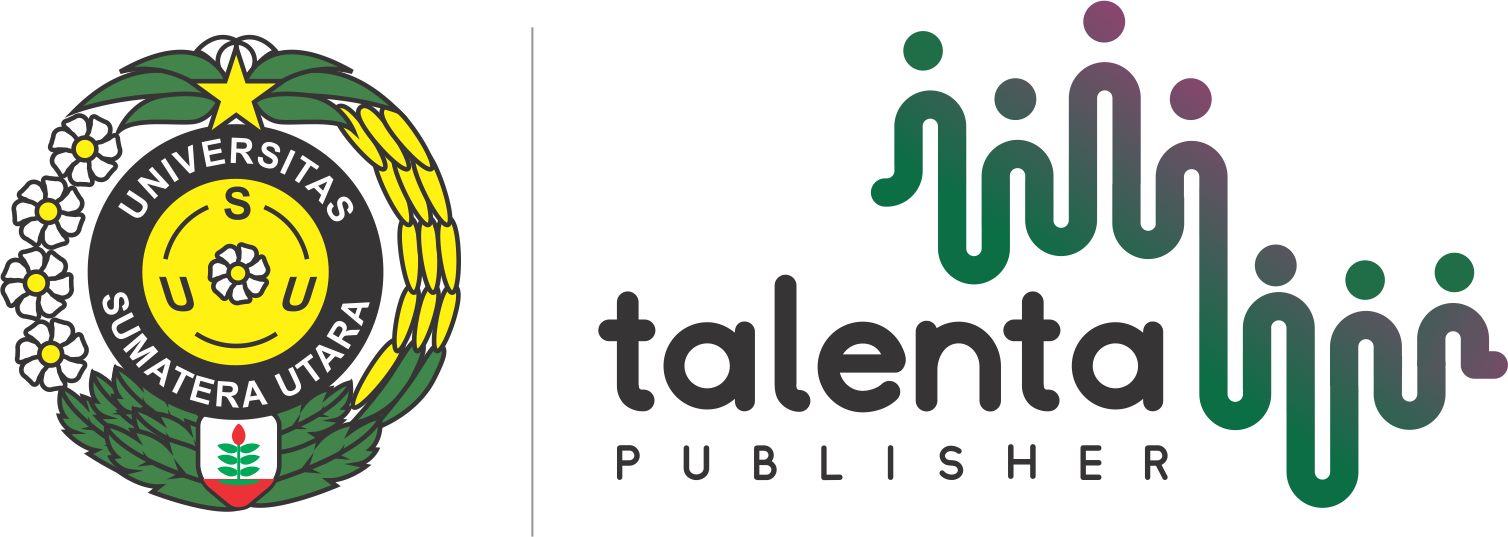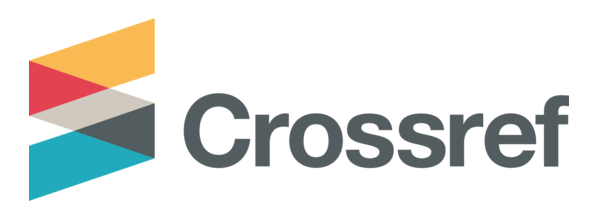Hubungan konsumsi sugar sweetened beverages dan aktivitas fisik dengan rasio lingkar pinggang panggul siswa MAS Plus Al-Ulum Medan
DOI:
https://doi.org/10.32734/trophico.v4i2.18738Keywords:
SSB's, physical activity, WHR, adolescentsAbstract
The waist-hip ratio (WHR) is the comparison between an individual's waist circumference and hip circumference. This ratio is frequently used in health research to assess body fat distribution and can indicate health risks associated with obesity. This study aims to evaluate the relationship between the consumption of sugar-sweetened beverages and physical activity with the waist-hip ratio among students of MAS Plus Al-Ulum Medan. This research employs a quantitative method with a cross-sectional approach. The results indicate that most students consume excessive amounts of sugar (≥50 grams/day) and have low levels of physical activity. Bivariate analysis using Spearman's rank correlation showed a significant relationship between the consumption of sugar-sweetened beverages and WHR, with a strong and positive correlation. Additionally, there is a significant relationship between the level of physical activity and WHR, with a strong and inverse correlation. Students of MAS Plus Al-Ulum Medan are encouraged to reduce their consumption of sugar-sweetened beverages and increase their physical activity.
Keywords: SSB’s, physical activity, WHR, adolescents
Downloads
References
Akhriani, M., Fadhilah, E., & Kurniasari, F. N. (2016). Hubungan konsumsi minuman berpemanis dengan kejadian kegemukan pada remaja di SMP Negeri 1 Bandung. Indonesian Journal of Human Nutrition, 3(1).
Annisa, N. R., Dieny, F. F., Nissa, C., & Tsani, A. F. A. (2020). Sugar-sweetened beverages as risk factor of central obesity among women in reproductive age. Jurnal Gizi Indonesia (The Indonesian Journal of Nutrition), 8(2), 126–133. https://doi.org/10.14710/jgi.8.2.126-133
Anwar, K., & Khalda, N. R. (2023). Hubungan konsumsi sugar sweetened beverages dengan rasio lingkar pinggang pinggul pada remaja di Jakarta Selatan. Jurnal Ilmu Gizi dan Dietetik, 2(3), 221–229. https://doi.org/10.25182/jigd.2023.2.3.221-229
Balitbangkes RI. (2018). Laporan Riskesdas 2018 Nasional.pdf. Lembaga Penerbit Balitbangkes. Badan Kebijakan Pembangunan Kesehatan.
Bleich, S. N., & Vercammen, K. A. (2018). The negative impact of sugar-sweetened beverages on children’s health: An update of the literature. BMC Obesity, 5(1). https://doi.org/10.1186/s40608-017-0178-9
Dewi, F. U., & Sugiyanto, S. (2020). Hubungan asupan zat gizi, aktifitas fisik, lingkar perut dan persen lemak tubuh dengan kadar kolesterol total penderita dislipidemia rawat jalan di RSUD dr. Doris Sylvanus Palangka Raya. Jurnal Forum Kesehatan: Media Publikasi Kesehatan Ilmiah, 10(2). https://doi.org/10.52263/jfk.v10i2.204
Ebbeling, C. B., Feldman, H. A., Steltz, S. K., Quinn, N. L., Robinson, L. M., & Ludwig, D. S. (2020). Effects of sugar-sweetened, artificially sweetened, and unsweetened beverages on cardiometabolic risk factors, body composition, and sweet taste preference: a randomized controlled trial. Journal of the American Heart Association, 9(15). https://doi.org/10.1161/JAHA.119.015668
Ferretti, F., & Mariani, M. (2019). Sugar-sweetened beverage affordability and the prevalence of overweight and obesity in a cross section of countries. Globalization and Health, 15(1). https://doi.org/10.1186/s12992-019-0474-x
Fontes, A. S., Pallottini, A. C., Vieira, D. A. D. S., Fontanelli, M. de M., Marchioni, D. M., Cesar, C. L. G., … Fisberg, R. M. (2020). Demographic, socioeconomic and lifestyle factors associated with sugar-sweetened beverage intake: A population-based study. Revista Brasileira de Epidemiologia, 23. https://doi.org/10.1590/1980-549720200003
Haryati, M. T., Syamsianah, A., & Handarsari, E. (2014). Hubungan konsumsi makanan sumber lemak, karbohidrat dan aktivitas fisik dengan rasio lingkar pinggang panggul (RLPP) pada pengemudi truk Po. Agm Kudus. Jurnal Gizi Universitas Muhammadiyah Semarang, 3(2), 1–9.
Hu, D., Zhou, S., Crowley-Mchattan, Z. J., & Liu, Z. (2021). Factors that influence participation in physical activity in school-aged children and adolescents: A systematic review from the social ecological model perspective. International Journal of Environmental Research and Public Health, 18(6), 1–20. https://doi.org/10.3390/ijerph18063147
Johnson, R. J., Sanchez-Lozada, L. G., & Nakagawa, T. (2010). The effect of fructose on renal biology and disease. Journal of the American Society of Nephrology, 21(12). https://doi.org/10.1681/ASN.2010050506
Kuo, C. T., Chen, D. R., Chan, C. C., Yeh, Y. P., & Chen, H. H. (2023). Sex differences in the association between sugar-sweetened beverages consumption and metabolic risks among the working-age population in Taiwan. Public Health Nutrition, 26(3). https://doi.org/10.1017/S1368980022001549
Lam, C. S. P. (2015). Heart failure in Southeast Asia: facts and numbers. ESC Heart Failure, 2(2), 46–49. https://doi.org/10.1002/ehf2.12036
Lobstein, T., Jackson-Leach, R., Powis, J., Brinsden, H., & Gray, M. (2023). World obesity atlas 2023. World Obesity Federation.
Lugina, W., Maywati, S., & Neni, N. (2021). Hubungan aktivitas fisik, asupan energi, dan sarapan pagi dengan kejadian overweight pada siswa SMA Tasikmalaya tahun 2020. Jurnal Kesehatan Komunitas Indonesia, 17(2), 305–313. https://doi.org/10.37058/jkki.v17i2.3889
Malnick, S. D. H., & Knobler, H. (2006). The medical complications of obesity. QJM: An International Journal of Medicine. https://doi.org/10.1093/qjmed/hcl085
Masrul, M. (2018). Epidemi obesitas dan dampaknya terhadap status kesehatan masyarakat serta sosial ekonomi bangsa. Majalah Kedokteran Andalas, 41(3). https://doi.org/10.25077/mka.v41.i3.p152-162.2018
Molla, M. D., Wolde, H. F., & Atnafu, A. (2020). Magnitude of central obesity and its associated factors among adults in urban areas of Northwest Ethiopia. Diabetes, Metabolic Syndrome and Obesity, 13, 4169–4178. https://doi.org/10.2147/DMSO.S279837
Mukiwanti, E., & Muwakhidah. (2017). Hubungan rasio lingkar pinggang pinggul dan indeks massa tubuh terhadap tekanan darah pada middle age (45-59 tahun) di desa polaman kota semarang. Jurnal kesehatan masyarakat.
Nagata, J. M., Smith, N., Alsamman, S., Lee, C. M., Dooley, E. E., Kiss, O., … Gabriel, K. P. (2023). Association of physical activity and screen time with body mass index among US adolescents. JAMA Network Open, 6(2). https://doi.org/10.1001/jamanetworkopen.2022.55466
Nurhayati, T. (2018). Hubungan aktivitas fisik dengan lingkar pinggang pada masyarakat kecamatan Cijulang kabupaten Pangandaran Jawa Barat. Jurnal Pendidikan Jasmani Dan Olahraga, 3(2). https://doi.org/10.17509/jpjo.v3i2.12640
Par’i, H. M., Wiyono, S., & Harjatmo, T. P. (2017). Penilaian status gizi: Bahan ajar gizi (1 ed.). Jakarta: Kementrian Kesehatan RI.
Pibriyanti, K. (2018). Studi obesitas sentral pada mahasiswa prodi kesehatan masyarakat UNIVET Bangun Nusantara Sukoharjo. Jurnal Kesehatan, 11(1). https://doi.org/10.23917/jk.v11i1.7000
Qoirinasari, Q., Simanjuntak, B. Y., & Kusdalinah, K. (2018). Berkontribusikah konsumsi minuman manis terhadap berat badan berlebih pada remaja? AcTion: Aceh Nutrition Journal, 3(2). https://doi.org/10.30867/action.v3i2.86
Rismawati, D. (2021). Survey aktivitas fisik pada orang dewasa madya umur 40-55 tahun di kecamatan Rantau Pandan. Jurnal Score, 1(2), 01–07. Diambil dari www.ine.es
Sadegholvad, S., Yeatman, H., Parrish, A. M., & Worsley, A. (2017). Professionals’ recommended strategies to improve Australian adolescents’ knowledge of nutrition and food systems. Nutrients, 9(8). https://doi.org/10.3390/nu9080844
Simbolon, D., Tafrieani, W., & Dahrizal, D. (2018). Edukasi gizi dan perubahan berat badan remaja overweight dan obesitas. Jurnal Kesehatan, 9(2), 289. https://doi.org/10.26630/jk.v9i2.841
Sirajuddin, S., & Astuti, T. (2018). Survey konsumsi pangan. Badan Pengembangan Dan Pemberdayaan Sumber Daya Manusia Kesehatan. Jakarta: EGC.
Wahyuni, N., & Murbawani, A. (2016). Hubungan lingkar pinggang dan rasio lingkar pinggang panggul dengan kadar serum high sensitivity c-reactive protein (hscrp) pada remaja obesitas. Journal of Nutrition College, 5(4).
Wulansari, A., Martianto, D., & Baliwati, Y. F. (2013). Kerugian ekonomi akibat biaya perawatan kesehatan langsung pada orang dewasa obesitas di Indonesia. Jurnal Mkmi, Vol. 12 No, 208–215.
Yu, L., Zhou, H., Zheng, F., Song, J., Lu, Y., Yu, X., & Zhao, C. (2022). Sugar is the key cause of overweight/obesity in sugar-sweetened beverages (ssb). Frontiers in Nutrition, 9(June), 1–10. https://doi.org/10.3389/fnut.2022.885704
Zhu, Z., Tang, Y., Zhuang, J., Liu, Y., Wu, X., Cai, Y., … Chen, P. (2019). Physical activity, screen viewing time, and overweight/obesity among Chinese children and adolescents: An update from the 2017 physical activity and fitness in China - The youth study. BMC Public Health, 19(1), 1–8. https://doi.org/10.1186/s12889-019-6515-9
Downloads
Published
How to Cite
Issue
Section
License
Copyright (c) 2024 Tropical Public Health Journal

This work is licensed under a Creative Commons Attribution-ShareAlike 4.0 International License.
















